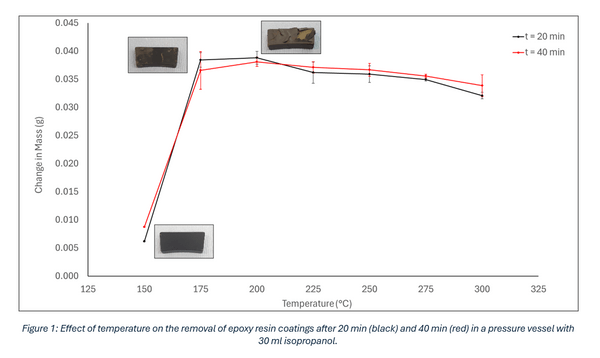Presentation Information
[O8-5]Preventing the downcycle: Removing epoxy resins from sintered NdFeB magnets for improved recycling
*Anna Mary Dickinson-Lomas1, Matthew J Keith1, Gary A Leeke1, Michael J Jenkins1, David N Brown1 (1. University of Birmingham (UK))
Keywords:
NdFeB Recycling,Epoxy coating,Solvolysis
Neodymium-iron-boron (NdFeB) permanent magnets contain critical elements that present supply chain challenges, particularly those in the electric motor and power generation industries. The International Energy Agency has forecast the annual production of electric vehicles to reach 30 million by 2035 [1]. This is accompanied by a predicted increase in rare earth element market value from 5 billion USD in 2023 to 36.2 billion USD in 2050 [2]. This is a key motivator for refining the recycling process for these rare earth permanent magnets to ensure they are not downcycled at the end of their life. A significant cause of this downcycling is often due to the thermoset epoxy-based coating which is applied to the outside of sintered NdFeB magnets to improve corrosion resistance. To prevent this downcycling, a solvent-based batch process has been developed, targeting the removal of the epoxy resin from NdFeB magnets. Individual commercial magnet samples of grade N42SH were exposed to a solution of 30 ml isopropanol in a 100 ml pressure vessel and heated to between 150 and 300 °C for a time range of 0 to 40 min. This study indicated that resin removal from the surface of the sintered N42SH magnets was successful to varying degrees across these conditions. As depicted in Figure 1, the mass loss achieved at the lowest temperature of 150 °C was very low at 0.009 g (approximately 23% of the coating). At 200 °C for 40 min, the reduction in mass was measured as 0.038 g (approximately 99% of the coating), after which point the mass loss decreased gradually with increasing temperature. This indicates that the rate of degradation only increases with increasing temperature to an extent, also suggesting that there is no significant added benefit to increasing the temperature further, especially since higher temperatures can have a detrimental impact on the magnetic material. The data plotted for a 20 min hold versus a 40 min hold demonstrates that a similar pattern is followed for each, and that there is little to be gained from lengthening the time of the experiment.It was also found that this process had very little effect on the magnetic properties of the magnet samples, demonstrating an average increase in coercivity of ~1.1% and average decreases in remanence and maximum energy product of 6.1% and 11.7% respectively. These changes could be attributed to contamination or additional reactions during processing, but further investigation is required to confirm this. Despite this, these losses were deemed to be insignificant since the values still fell within the functioning range for this grade of magnet. These early-stage experiments suggest that there is no significant detriment to the recovered material.[1] J. Ormerod, “Permanent magnet markets and applications,” Modern Permanent Magnets, pp. 403–434, Jan. 2022, doi: 10.1016/B978-0-323-88658-1.00012-1.[2] Green Car Congress, “Adamas Intelligence expects 10-fold increase in value of rare earths to $36.2B by 2035; growth led by passenger EV traction motors.” Accessed: Jan. 08, 2024. [Online]. Available: https://www.greencarcongress.com/2023/02/20230204-admas.html

